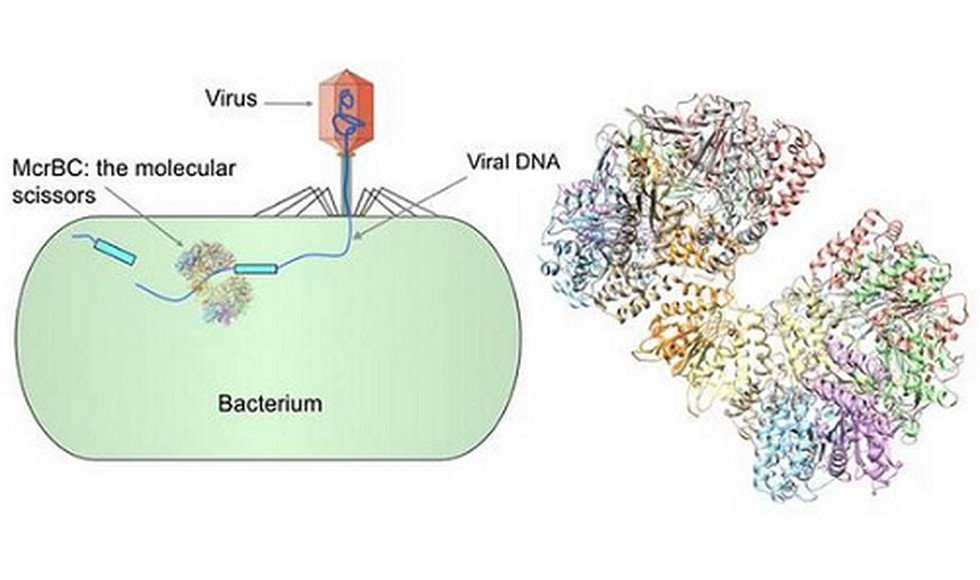McrBC: prevents viral infections in bacteria cell – Diligent IAS 29/08/2019 – Posted in: Daily News – Tags: Phage Therapy
McrBC
For: Preliminary & Mains
Topics covered: All about McrBC and Phage Therapy
News Flash
A team of scientists at the Indian Institute of Science Education and Research claims to have determined the atomic structure of McrBC.
- McrBC is a complex bacterial protein which helps prevent viral infections in a bacterial cell and functions as a molecular scissor.
- The pathbreaking structure of the McrBC was published last month in two prestigious, peer-reviewed scientific journals — Nature Communications and Nucleic Acids Research (which is published by the Oxford university Press).
- It is a major step towards understanding the working of the molecular scissors.
- This is the first report of the high-resolution structure from India determined using electron cryomicroscopy, commonly known as cryo-EM.
Phage Therapy
- The determination of the McrBC’s structure has long-term implications in ‘phage therapy’ and could help combat drug-resistant infections in the future.
- Phage therapy is the use of bacteriophages to treat bacterial infections.
- Phages are groups of viruses that infect and kill bacterial cells.
How the ‘scissors’ work?
- Like the human immune system, which fights viruses, bacteria too have an elaborate defence system to combat phages (the viruses which infect bacterial cells).
- These phages inject their DNA into the bacterial cell, wherein they multiply and duplicate the virus that eventually bursts out of that cell to infect many more.
- To prevent infection, bacteria have specialised ‘molecular scissors’ which specifically cut the foreign DNA, thus preventing their multiplication in bacterial cells.
- The molecular scissors not only cut the viral DNA, but also regulate the entry of other foreign DNA that might host an antibiotic resistance gene.
- The understanding of the molecular scissors would aid in combating multidrug resistant microbes.
- The design of such ‘inhibitors’ will be facilitated by their 3D structures.
How McrBC’s are unique?
The McrBC’s unique feature is that it requires to be powered by an inbuilt motor that uses GTP (guanosine triphosphate) — an energy currency of the bacterial cell — as ‘fuel’ to cut the foreign DNA.
Trailblazing work in the field of bacterial immunity against viruses was first undertaken by Italian microbiologist Salvador Luria, in the early 1950s, who discovered the phenomenon of host-controlled restriction and modification of a bacterial virus.
McrBC is used as a laboratory tool to study the readability of human and other genomes.
Source: The Hindu
ALSO, READ MORE DAILY NEWS
- Open Acreage Licensing Policy- IV
- IMF’s Annual Observance Report of ‘Special Data Dissemination Standard’
- Moon’s craters captured by Chandrayaan 2
- The Coal in India 2019 report
You are on the Best Online IAS preparation platform. You are learning under experts.
We are present on Facebook- Diligent IAS, LinkedIn- Diligent IAS, YouTube- Diligent IAS, Instagram- Diligent IAS. Get in touch with us

